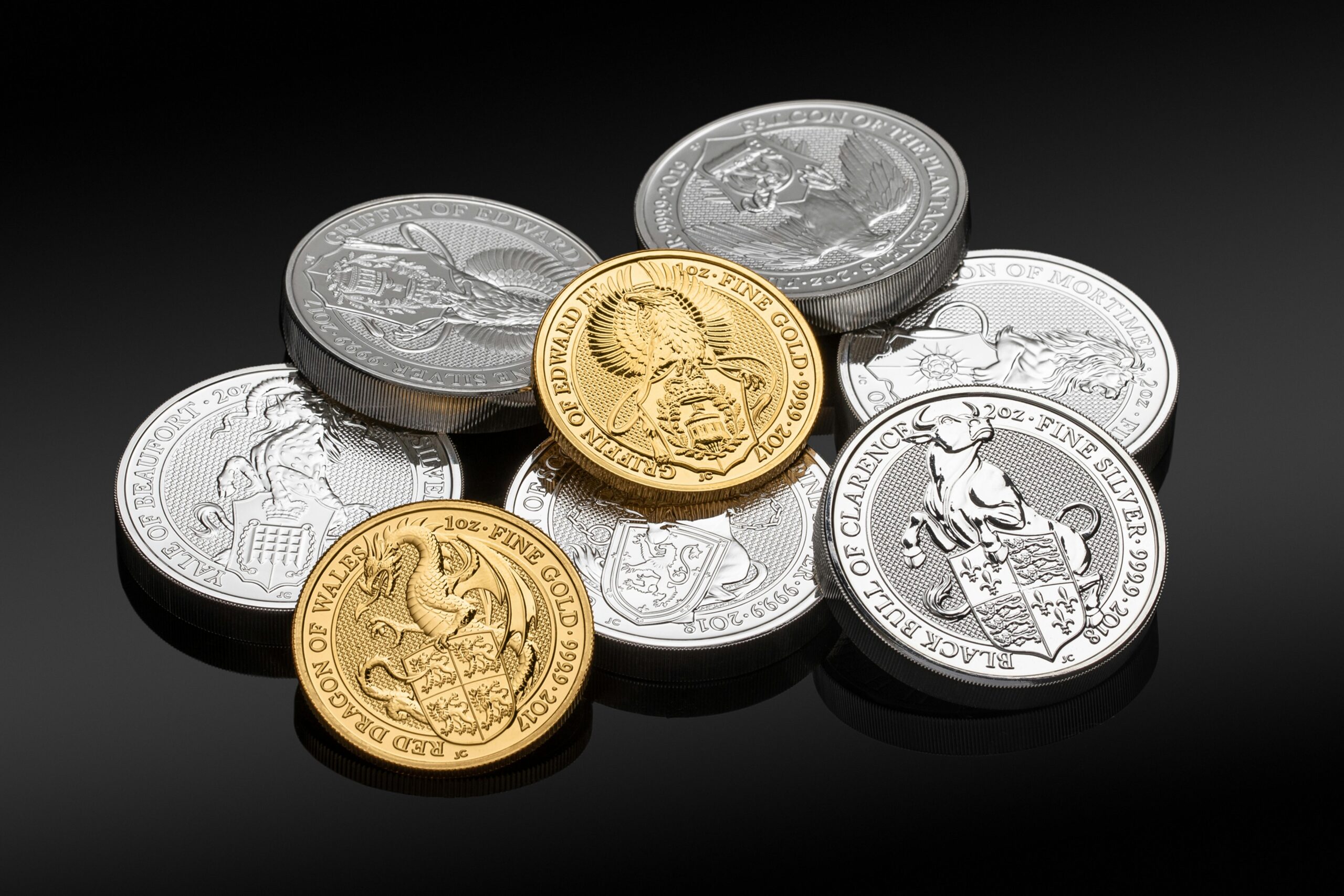
Gold vs Silver Bullion – Which Performs Better during Inflation?
Inflation can quietly erode your savings, making it harder to preserve your wealth. Many investors turn to precious metals like gold and silver to safeguard their money when the value of currency falls. Both metals have been popular for centuries, yet they behave differently in various market conditions. Choosing between gold and silver bullion during inflation is not only about preference, but also about performance, cost, and liquidity. In this article, we will compare gold vs. silver bullion during inflationary times, so you can make a confident investment decision backed by real insights.
Gold vs. Silver Bullion: Why Do They Shine During Inflation?
Gold vs. silver are popular as safe assets in the times of uncertainty. When inflation increases, paper currency usually decreases in value. Individuals resort to precious metals since they are likely to maintain their value and in fact increase in value. Gold is stable and silver is more affordable in most cases and thus appealing to the large and small investors. These metals are tangible and not just numbers on a screen which provides some security. They serve as a hedge in inflationary periods and tend to safeguard and save wealth in the future.
Historical Value of Gold and Silver Assets
Gold vs. silver are the symbols of wealth and stability which were present since centuries. They have been best to use in trade and savings all over civilizations in the world. They are gain better value due to their beauty and rarity and trusted because they are universally acceptable. Empires have come and gone but these metals have never gone out of fashion.
Investors regard them as an interlinking of the past and current and a tested method of storing value. This rich history is the reason why gold and silver can still be valued as part of the options that seek stability in an evolving economy.
Price Performance During Inflationary Periods
Inflation leads to rise in the cost of life and losing buying power of money. During those periods, the gold and silver price Canada tend to increase. Investors look up to them as a hedge, which protects assets against devaluation. The stability of gold is appealing to anyone who wants protection, whereas the price of silver is more affordable and can be accessed by more people.
The history has taught us that in the time of high inflation, both metals perform better than most other investments. This is their performance, which makes them continue to be popular in portfolios, providing a balance of security, growth potential, and ability to withstand economic pressure.
Gold vs Silver Bullion: Which Works Best during Inflation?
Gold silver bullion has always been regarded as safe-haven assets in times of inflation. Both metals have the capacity to store wealth, but their performance is different because of the industrial demand, investor sentiment, and the state of the global economy. It is important to learn these differences to determine which metal would work better in the event of increasing prices.
Historical Performance of Gold
Gold has a good history of being a store of value and it do well when there is a surge in inflation. It is not very industrialized and hence its price is not influenced by the manufacturing cycles. In the past, as the prices of consumer goods go up, the price of gold goes up because people want stability and security against currency devaluation.
Historical Performance of Silver
Silver is also good in times of inflation but being an industrial metal as well as investment metal, it has a more fluctuating price. Silver may perform better than gold when the economy is experiencing an intense growth accompanied by inflation because industrial demand is higher. But in inflationary weaker economies, silver may fall behind because of low manufacturing activity.
Volatility and Risk Considerations
Gold is also generally less volatile than silver and thus a more reliable hedge. The fluctuations of 1 oz silver price Canada may be large, and this means greater profits and losses. Silver can be attractive to risk-tolerant investors, and gold can be preferred by investors who want stability in a volatile, inflationary world.
Liquidity and Accessibility
Gold bullion is very liquid, can be easily traded on any market in the world and can be purchased in many ways including coins, bars, and ETFs. Silver, likewise, is liquid, only that it has a lower price per ounce so holding a lot of value in it takes more space. This can make gold more feasible in terms of wealth preservation on a larger scale when inflationary pressures are present.
Long-Term Investment Perspective
In the long-term perspective, the price of gold is prone to gradually increase with the monetary growth and inflation. Silver can provide greater percentage returns in some periods, but it also experiences longer declines. Gold tends to provide greater long-term inflation protection than silver. It is favourite among investors who are most concerned about preserving their purchasing power over the long run.
Final Verdict: Choosing the Right Metal
Gold vs. silver can equally secure wealth in inflation. However, one should choose between them based on the risk of the investor, where to store them, and what is the market perspective. Gold tends to be safer, more stable and silver may provide greater returns in the appropriate environment. A combination of the two metals will help strike a balance between security and expansion.
Secure Your Future Wealth Today with Fine Gold Bullion
Don’t let inflation quietly eat away at your hard-earned savings. Fine Gold Bullion offers unmatched stability, universal value, and proven performance through centuries of economic change. Whether you are protecting your retirement or preserving family wealth, gold stands as a shield against uncertainty. Start building your gold reserve today and experience the confidence of owning a truly timeless asset. Contact us now to secure wealth at competitive rates and safeguard your financial future.
